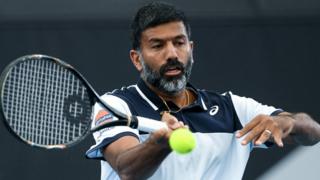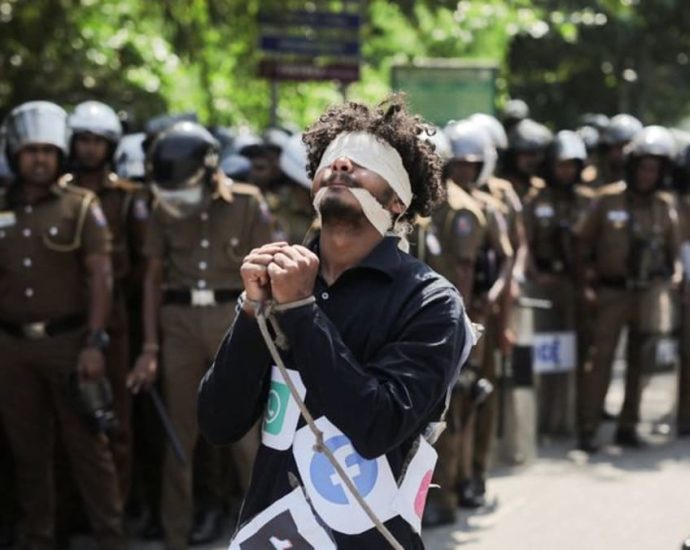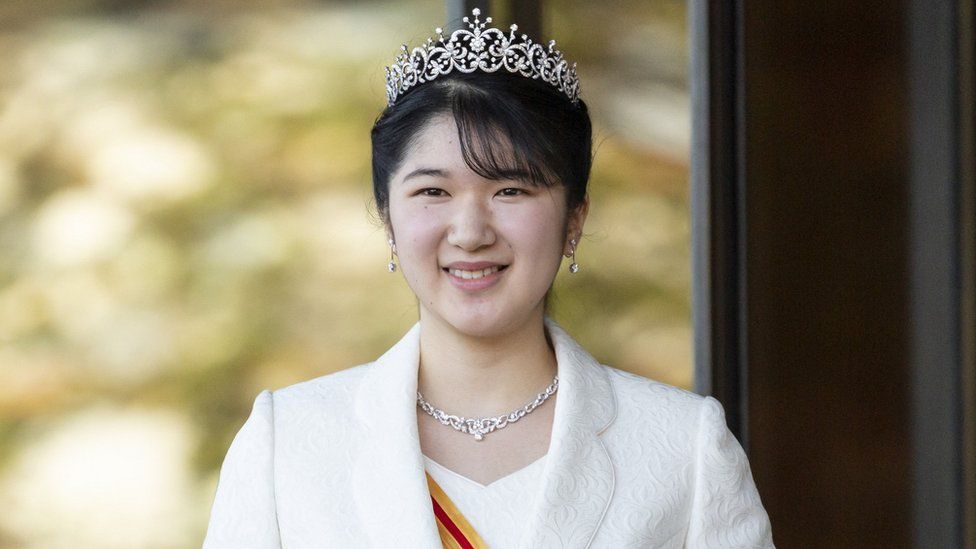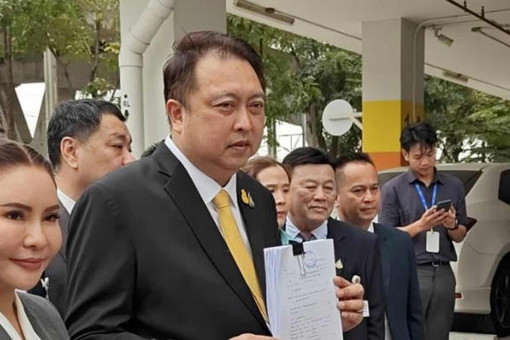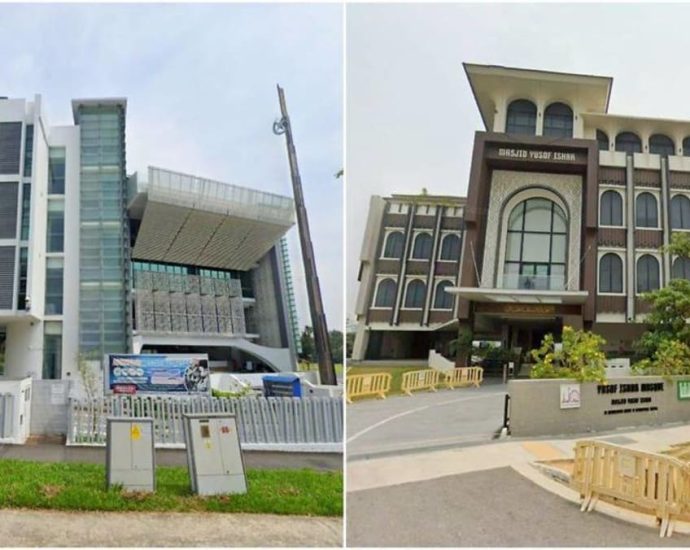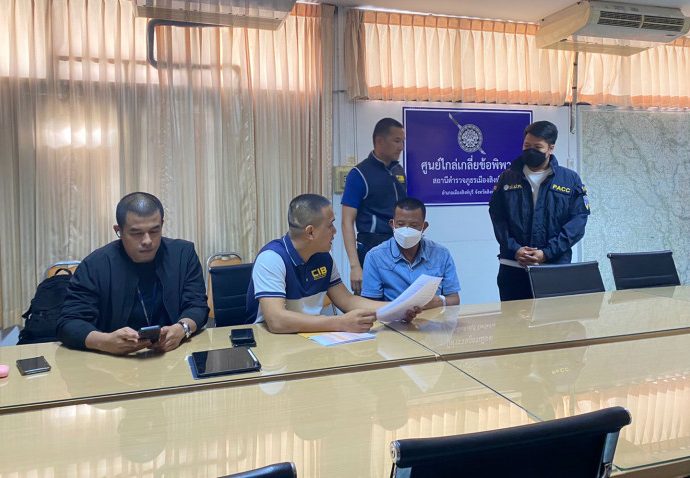Australian Open 2024 results: Rohan Bopanna becomes oldest tennis world number one aged 43
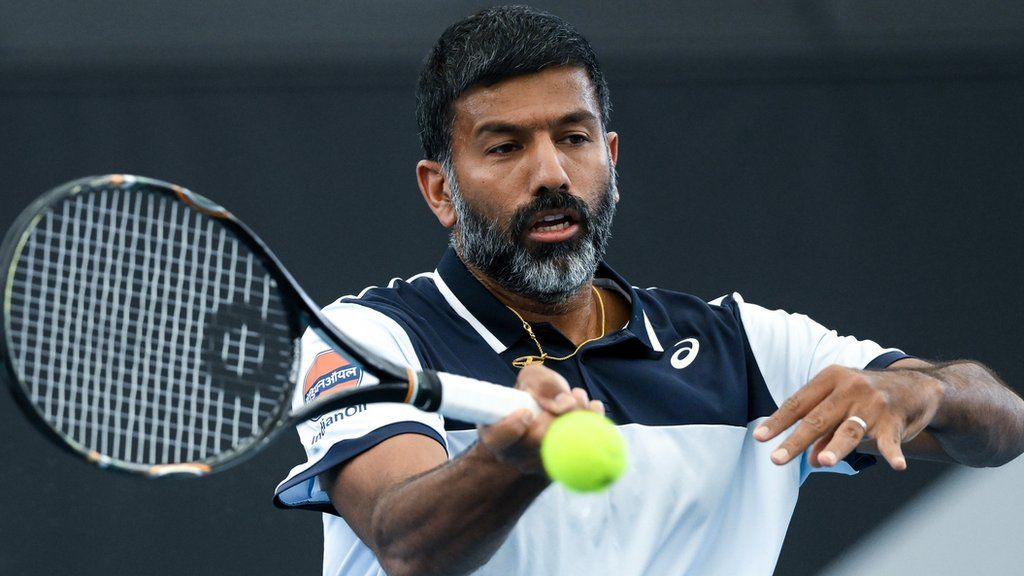 Getty Images
Getty Images|
Australian Open 2024 |
|---|
|
Venue: Melbourne Park Dates: 14-28 January |
|
Coverage: Commentary every day from 07:00 GMT on Tennis Breakfast on Radio 5 Sports Extra and BBC Sounds, with selected live text commentaries and match reports on the BBC Sport website and app |
India’s Rohan Bopanna will become the oldest tennis world number one aged 43 after he and Matthew Ebden reached the Australian Open doubles semi-finals.
Bopanna and Australian Ebden beat Argentine pair Maximo Gonzalez and Andres Molteni 6-4 7-6 (7-5).
It is the first time Bopanna has reached the top of the world rankings.
“People all over the world, you know, being 40 and above, I think it’s just going to inspire them in a different way,” he said.
Bopanna and Ebden will face Tomas Machac and Zhang Zhizhen in the last four in Melbourne.
Bopanna became the oldest ATP Masters 1,000 champion when he and Ebden won the Indian Wells doubles title in March last season.
He turned professional in 2003 and has won one Grand Slam mixed doubles title alongside Canada’s Gabriela Dabrowski at the 2017 French Open.
Bopanna credited his physiotherapist and Iyengar yoga with helping his longevity.
“I told her [physio] specifically what I needed, because I have no cartilage in my knees. It’s completely worn out,” Bopanna said.
“Yoga in a way not only strengthened my legs, my body, but also, I think made me calmer on the tennis court.
“It kind of really helped me focus a lot better. I don’t feel rushed on the tennis court.”
Bopanna will move to the top of the world rankings when they are updated on Monday. He and Ebden have the same number of points, but the Australian has played three more tournaments over the same period.
The previous oldest men’s doubles number one was Mike Bryan, who was 41 years and 76 days.
Serena Williams is the oldest women’s singles number one at 35, while Roger Federer is the oldest men’s singles number one at 36. Novak Djokovic, who is the same age, could likely pass that record this year.
David Wagner was 44 in 2018 when he was ranked number one in the quad wheelchair rankings.
Related Topics
Some home owners in Singapore turning to renovation apps to save on costs

Homeez CEO Tyson Lim said the app gives users options on whether they would like to oversee the works themselves or choose freelance project managers that they want to work with, which they can pay a one-time fee for.
“So for example, we do have some freelance project managers that charge maybe S$5,000 for managing a five-room flat,” he added.
“The home owners are in control of the money and paying out to the suppliers directly, rather than the money flowing into an interior design firm… where a lot of unnecessary middleman fees are from there. So why not just get them to pay directly to the professional managing the project?”
Consumers are able to spend less because there is no interior designer nor salesperson involved, said Mr Lim, who has been in the interior design line for the past 10 years.
“Conventionally, interior designers earn through a mark-up scheme, rather than a one-time fee,” he added.
“So if the cost (that) comes from a carpenter is S$100, they have to sell at maybe S$120 to S$150.
“That’s where their margin comes about. So when you compare the quotations, you realise quotations vary right there.”
Another web app Design Plus tracks the progress of the works and ensures consistent communication between home owners and contractors.
It hopes to save around 40 per cent of costs incurred through delays and rectification work.
“On average, renovation for a HDB apartment can consist of up to 50 different key persons, or 50 different contractors or suppliers. Designers will need to manage this amount of people and ensure everybody gets the same (and) correct information, avoid doing wrong things, and deliver quality work,” said Mr Zoron Koh, creative director at Design Plus.
“With technology, we are able to enhance the workflow. Therefore, we can address issues like ineffectiveness, high renovation costs, job delays and miscommunications.”
Sri Lanka votes on new law to regulate online content
COLOMBO: Sri Lanka’s lawmakers are set to vote on a social media regulation bill on Wednesday (Jan 24) which opposition politicians and activists allege will muzzle free speech. The Online Safety Bill proposes jail terms for content that a five-member commission considers illegal and make social media platforms such asContinue Reading
Japanâs popular Warabimochi Kamakura chain opening first outlet in Singapore at One Holland Village

Other than traditional warabi mochi, which comes in chunky pieces, Warabimochi Kamakura is known for its photogenic dessert drinks loaded with – naturally – warabi mochi, which are cut into tiny pieces so they can be slurped up with a bubble tea straw.
There are seven flavour options for the iced drinks, like strawberry yogurt (from S$7.90), strawberry milk (from S$7.90), asakawa-en matcha (from S$6.40), coffee milk (from S$6.40), houjicha (from S$6.40), lemonade (from S$6.40) and matcha lemonade (from S$6.40).
For flavours like matcha, coffee milk and houjicha, you can also enjoy your drinks slightly warm via the ‘mild hot’ options.
To celebrate its opening, the new store is offering a one-for-one promotion from Feb 3 to 5 on its matcha and coffee milk warabi mochi dessert drinks. Each customer is limited to two redemptions.
TRADITIONAL WARABI MOCHI
Ukrainian-born model winning Miss Japan re-ignites identity debate
 Instagram
Instagram“There have been racial barriers, and it has been challenging to be accepted as Japanese.”
That’s what a tearful Carolina Shiino said in impeccable Japanese after she was crowned Miss Japan on Monday.
The 26-year-old model, who was born in Ukraine, moved to Japan at the age of five and was raised in Nagoya.
She is the first naturalised Japanese citizen to win the pageant, though her victory has re-ignited a debate on what it means to be Japanese.
While some recognised her victory as a “sign of the times” others have said she does not look like what a “Miss Japan” should.
Her win comes nearly ten years after Ariana Miyamoto became the first bi-racial woman to be crowned Miss Japan in 2015.
With a Japanese mother and African American father, Ms Miyamoto’s victory back then raised questions about whether a person of mixed race should be eligible to win the competition.
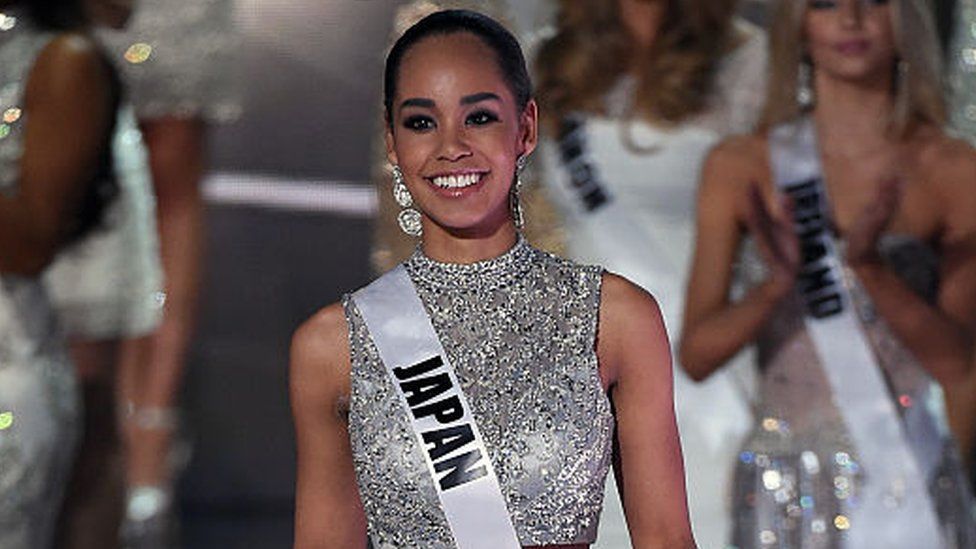
“This person who was chosen as Miss Japan is not even a mix with Japanese but 100% pure Ukrainian. Understand she is beautiful, but this is ‘Ms Japan’. Where is the Japaneseness?” said a post on X, formerly known as Twitter.
“If she was half [Japanese], sure no problem. But she’s ethnically 0% Japanese and wasn’t even born in Japan,” said another comment.
Others said her win was sending the “wrong message” to others in the country.
“I think that Japanese people naturally (would) get the wrong message when a European looking person is called the most beautiful Japanese.”
Others questioned whether choosing the Ukrainian-born model was a political decision.
“If she were born Russian, she wouldn’t have won. Not a chance. Obviously the criteria is now a political decision. What a sad day for Japan”, one person alleged.
After the announcement, Ai Wada, the organiser of the Miss Japan Gran Prix pageant has said that the event “gave us an opportunity to rethink what Japanese beauty is”.
Ms Wada added: “Following today’s result, there is one thing I am convinced of… Japanese beauty exists not in the appearance, not in the blood, but it exists firmly in our heart”.
It echoes what Ms Shiino had announced in Instagram earlier last year when she received Japanese nationality, saying: “I may not look Japanese, but as I grew up in Japan – my mind has become a Japanese.”
And as she accepted her trophy as Ms Japan 2024, she said winning the title was “a dream”.
“Being recognised as a Japanese in this competition fills me with gratitude.”
You may also be interested in:
This video can not be played
To play this video you need to enable JavaScript in your browser.
-
-
20 January 2023
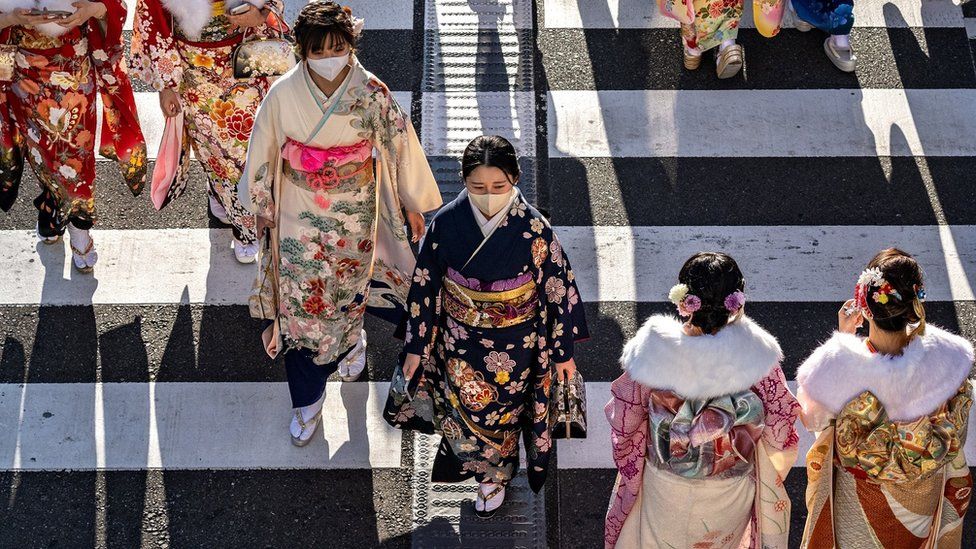
-
-
-
8 September 2016
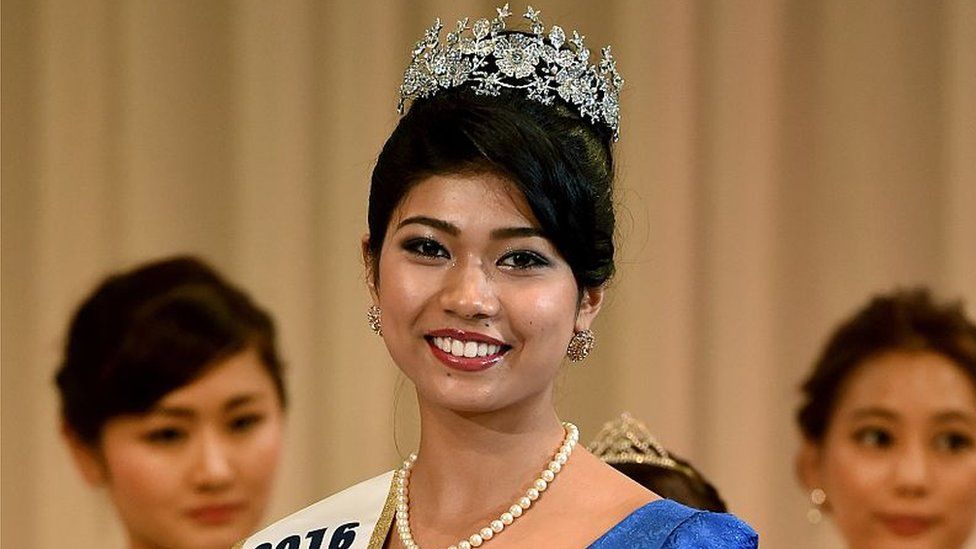
-
-
-
5 June 2015

-
Former labour minister files lawsuit against DSI
Claims malfeance in foreign labour bribery implication
PUBLISHED : 24 Jan 2024 at 13:24

Former labour minister Suchart Chomklin has taken the Department of Special Investigation to court for alleged malfeasance by implying he took 36 million baht in bribes from Thai workers destined for Finland.
Speaking at the Central Criminal Court for Corruption and Misconduct Cases in Bangkok on Wednesday, Mr Suchart said he filed malfeasance, persecution and related charges against a former director-general of the DSI, an acting director-general and a human-trafficking cases director.
He was taking legal action to defend himself from the DSI’s recent announcement that it would soon file charges against two former ministers and two high-level officials at the Ministry of Labour for allegedly demanding 36 million baht in exchange for approving the sending of Thai workers to Finland.
The DSI alleged a group of politicians, civil servants and civilians demanded that a Thai job broker pay an average of 3,000 baht for each worker destined to harvest wild berries in the nordic country.
The broker in turn passed the special requirement on to about 12,000 Thai workers sent to Finland from 2020 to 2023. They had to find and pay up about 36 million baht in total, in addition to their other costs.
On Wednesday Mr Suchart said although the DSI did not name a suspect, it damaged his reputation and his family’s name because it mentioned the period of his tenure as minister, and this implied his involvement.
Mr Suchart said the DSI’s recent announcement was politically motivated. The DSI had filed the case with the National Anti-Corruption Commission in late October last year, but did not make the announcement until this month. Moreover, he had not received a summons to submit a statement in his defence on any charge.
He said there was a bribery allegation in 2020. It concerned only business operators, and an investigation did not find any irregularities.
Mr Suchart served as minister of labour in the second cabinet of then-prime minister Prayut Chan-o-cha from August 2020 to September 2023. He is a deputy leader of United Thai Nation, one of the parties in the current governing coalition.
America: the perils of being No 1 – Asia Times
The end of World War II was distinguished by a carefully choreographed scenario that was finalized by the Allies at the Yalta Conference held in February 1945.
During this process, Josef Stalin and Franklin Roosevelt, with Britain and France as little more than spectators, reformatted the borders of the nations of Central Europe.
These borders survive as designed to this day, albeit for one reason that is hardly ever mentioned: ethnic cleansing.
The previous centuries had witnessed a slow but steady drift east of populations of Germanic culture. Most of these welcomed Adolf Hitler with open arms, but when the tide turned against him practically all, numbering some 12 million, moved back to Germany with the retreating German armies, leaving behind what had become mono-ethnic countries.
The emergence in Central Europe of mono-ethnic nation-states was paralleled by the Cold War. With a potential direct confrontation between the two superpowers coming under the acronym of MAD – mutually assured destruction – the relations between the two became an exercise that was in essence predictable.
Postwar equilibrium
In practice this meant that each superpower acknowledged that its opponent had a core sphere of interest in which its authority would not be interfered with. Thus Washington could deal as it wished with the likes of Chile, Grenada, Panama or Nicaragua if they showed any sign of straying from under America’s umbrella.
Likewise, when the Hungarians in 1956 or the Czechs in 1966 revolted against their Soviet occupier, Washington abstained from providing them with any support.
Events took another turn when one of the two superpowers tried to encroach on its opponent’s turf. When in 1962 the Soviet Union placed some of its missiles in Cuba, the world came close to war until Moscow backtracked and repatriated its missiles.
Conversely, when one superpower would encroach on a borderline state, that is, one that was not fully in the sphere of influence of the other superpower, there would be a response, albeit somewhat muted. Thus when the Soviet Union invaded Afghanistan in 1979, Washington intervened by arming the Afghan resistance but abstained from deploying its own troops in the country.
For this global equilibrium to function, two requirements had to be met. First, the two superpowers had to be approximately matched militarily. Second, neither of the two superpowers would encroach on the core interests of the other.
What emerged from this world order can be summarized as “strategic predictability.” Granted, there were some occasional hiccups, but these were contained and did not threaten the global balance between the two superpowers.
Sole superpower
The collapse of the Soviet Union saw Russia lose what amounted to its empire, namely its Soviet “Republics” on one hand, and on the other its Central European client states such as Poland, Hungary and the like.
Ultimately, Russia reverted to what it had been in the last days of the Czarist regime, namely Europe’s least developed nation ruled for centuries by a succession of autocrats with one foot still in the Middle Ages.
As for the borders of the new Russia, these had in essence been inherited from the Soviet Union. As such, they often bore little relevance to historical factors or population origin and had the potential of becoming flashpoints were a crisis to erupt.
Conversely, the United States emerged as the only remaining superpower: its military unchallenged, its consumer model unmatched and its economic archetype unquestioned.
The collapse of the Soviet Union was an event of such momentous proportions that it would have justified the calling of a new Congress of Vienna. Such an assembly would not only have had to address the question of the borders of Russia and the former Soviet Republics but also issues such as population distribution as well as the security concerns of a potentially resurgent Russian state.
The only nation at the time that could have initiated such a process was the United States. But there was no American Talleyrand. There was only a succession of administrations, from Reagan to Bush to Obama, that mindlessly proceeded on a trajectory inherited from the Cold War – a trajectory that sought to consolidate the position of the United States as the undisputed No 1 potentate of the planet.
Reality breaks
The first test came in Europe.
As Yugoslavia came apart, Europe dithered, and it took Washington’s armed intervention, using the tool of NATO, to bring a semblance of peace to the Balkans. America’s Balkan foray carried two lessons.
The first was that 45 years of Cold War had not sufficed to weld Western Europe into the semblance of a shared political vision that they could implement, on their own turf, by force if needed.
The second was that the North Atlantic Treaty Organization, which had been conceived initially as a counterweight to the now-defunct Warsaw Pact, had morphed into an instrument of American foreign policy. It was a conjuncture that was not to be lost on Russia’s future leadership.
In the meantime, and off Washington’s radar screen, another contender was slowly emerging: militant Islam. Its guiding force was the Koran and its adepts were the heralds of a radical Islam that rejected the Western archetype in favor of a faith-based social and political order.
The terrorist attack of September 11, 2001, had a shattering effect on the United States. The attack, tragic as it may be, was statistically inconsequential. What was not was its psychological impact on a society that had been sheltered from foreign wars; an impact if anything amplified by an administration for which retribution had become a substitute for policy.
The pre-9/11 balance of power that prevailed in the Middle East ensured that the main contenders would mutually neutralize each other. Iraq was in a state of semi-war with Iran, ensuring that both would focus on the danger represented by the other. Syria, conversely, was at odds with Iraq, and thus sought an alliance with Iran as a counterweight.
It was an alliance of convenience, as the Iraqi and Syrian regimes represented two competing wings of the Baath party that were secular, which put them on a collision course with militant Islam. Thus while both regimes were ferociously opposed to Israel, which put them in conflict with the United States, they were also vehemently opposed to militant Islam, which made them, in objective terms, American allies.
Within this global archetype, Afghanistan was irrelevant and, except for the Taliban having sheltered al-Qaeda, a minor sideshow.
The American invasion of Iraq, which not only brought down Saddam Hussein but saw his regime replaced by a fragile Shia coalition, shattered this equilibrium, with the main winner being Iran, now bordered by a friendly Iraq and enjoying an open land bridge to Syria and its Hezbollah ally.
Washington’s subsequent attempt to bring down the Syrian regime of Bashar al-Assad through its Gulf proxies floundered, but not before the conflict had generated some 7 million refugees, of whom more than a million moved illegally to Europe.
A somewhat similar pattern developed in North Africa, where Washington orchestrated the fall of the Muammar Gaddafi regime. With no alternative power available the country sank into anarchy, thus opening the floodgates for illegal emigration from sub-Saharan Africa to Europe.
The crisis in Yugoslavia had illustrated the lack of a coordinated European foreign and defense policy. Having for all practical purpose delegated their defense to Washington, the Europeans found themselves in the same quandary when Russia invaded Ukraine.
Currently Russia has a population of 143 million inhabitants as opposed to the total population of Germany, France, Poland and the UK, which numbers 254 million, not counting 43.7 million Ukrainians. As for per capita GDP, it is in the fifty thousands for the Europeans as opposed to the thirty thousands for Russia.
Thus in terms of both demographic density and industrial production, the Europeans did not need the United States in a potential confrontation with Russia. However, when it appeared that the Europeans were indeed united in their opposition to the Russian invasion, it also emerged that they were incapable of giving practical substance to their common concern.
The end result was to make the war in the Ukraine a double conflict: within the Russian ecosystem a civil war between Russians of Russian identity and Russians of Ukrainian identity and, in parallel, a proxy war between the United States and Russia, with the Europeans on the sidelines.
In addition to its global economic impact, the Russia-US confrontation in Ukraine has generated a number of parallel sub-conflicts, some overt and some inherent. Thus it falls within reason that a beleaguered Russia would seek to thwart Washington’s designs over Syria or procure cruise missiles from Iran; just like Iran, short of confronting the United States overtly, would do so through its Houthi, Hamas or Hezbollah proxies.
Some 25 years after the demise of the USSR, the war in Ukraine and its global repercussions stand as the most glaring illustration of the catastrophic mismanagement of the post-Soviet era.
And while appropriating blame can be a subjective endeavor, clearly Washington, as the only surviving superpower, did not live up to a level of responsibility that could hopefully, if not somewhat naively, have been expected.
Finally it took American hubris and Vladimir Putin’s warped sense of history to bring the world to its present predicament – a predicament that inescapably hinges on the United States.
That a nation of some 330 million inhabitants, equivalent to barely 4.16% of the world population, is not only the world’s premier economy with a global cultural footprint but also its premier military power, is a reality that does not beg a simple answer, or an answer at all.
End of an era
For such a nation, initially the issue should have been how to manage the transition from having been one of two superpowers to being the only remaining one. Having failed on the first account, the challenge for Washington today is how to manage an imperial dominance that is increasingly being contested.
For the 20-some years following the collapse of the Soviet Union, the United States enjoyed a level of world dominance unique in history. That era is now ending. And while no single state is liable in the near future to match America’s economic and military superiority, that superiority is now increasingly being questioned both by state actors and by non-state entities.
Currently the United States is involved in three major confrontations with global implications: a war in the Ukraine against Russia, a war against militant Islam, and a politico/economic endeavor to “contain” China.
While these confrontations each have their own distinctive genetic makeup, they have generated a convergence of interests among those who are pitted against Washington. Thus while both China and Russia are at odds with militant Islam, this does not deter Iran, the embodiment of revolutionary Islam, from selling drones to Russia that Putin uses to confront America’s Ukrainian ally.
By the same token, one can wonder whether America’s long-term interests would not be better served by a reasonable combination of a strong Russia, a truncated but stable Ukraine, a Europe whose defense policy within NATO is not held hostage to the United States, and a China left to its own devices, rather than by the present chaos.
An American general once commented that the United States is good at blowing things up but at not much else. The coming decades will show whether the United States can focus on the “else,” were it only because power does not necessarily bring results.
In the meantime, the international community will have to contend with an America whose power exceeds its wisdom in an environment where chaos is the name of the game. Until, the hope is, confrontation will have made room for some degree of partnership, however painful the compromises it will entail.
Singaporean student who planned to attack mosques released from ISA detention after ‘good progress’ in rehabilitation

SINGAPORE: A Singaporean student who was detained in December 2020 for making “detailed plans and preparations to conduct terrorist attacks” against Muslims has been released after making “good progress” in his rehabilitation, the Internal Security Department (ISD) said on Wednesday (Jan 24).
The 19-year-old, who was 16 when he was detained, was the first Singaporean to be dealt with under the country’s Internal Security Act (ISA) for being radicalised by far-right extremist ideologies.
He had planned to use a machete to attack Muslims at two mosques in the Woodlands area on Mar 15, 2020, the second anniversary of New Zealand’s Christchurch attacks.
He chose Assyafaah Mosque and Yusof Ishak Mosque as targets because they were near his home.
The youth, who was not named, is a Protestant Christian of Indian ethnicity. He was also the youngest person to be dealt with under the ISA for terrorism-related activities, ISD said at the time.
ISD said the self-radicalised teen was “motivated by a strong antipathy towards Islam and a fascination with violence”.
He had been influenced by the 2019 terror attacks at two mosques in Christchurch and read the manifesto of the attacker, Brenton Tarrant.
Following three years of detention, ISD said the youth was released and issued with a suspension direction as he had made “good progress in his rehabilitation” and was “assessed to no longer pose an imminent security threat”.
A suspension direction is a ministerial direction to suspend an existing detention order. The suspension direction may be revoked and the individual will be re-detained if he does not comply with any of the stipulated conditions.
The conditions include prohibition from associating with any militant or terrorist groups or individuals, and the person is not allowed to leave the country without approval.
It was revealed on Wednesday that another teenager, 16, has become the second Singaporean to be dealt with under the ISA for being self-radicalised by far-right extremist ideology.
The ISD said that the youth, who is of Chinese ethnicity, identified as a white supremacist and aspired to conduct attacks overseas. However, beyond online searches for weapons, he did not take steps to actualise his attack aspirations.
Japan’s ‘hydrogen society’ may do more harm than good – Asia Times
In June 2023, Japan revised its national hydrogen strategy that envisages a carbon-neutral “hydrogen society.” Ironically, fulfilling this strategy could increase global greenhouse gas emissions as most of the global supply chains that the Japanese government is creating to import hydrogen rely on fossil fuels.
Rather than a “hydrogen society,” Japan should aim to become a “prudent hydrogen society.” This means using hydrogen that has been produced in the cleanest way possible and only in sectors where it makes the most sense for the climate.
In December 2017, Japan became the first country to formulate a national hydrogen strategy. Since then, over 40 countries have followed suit, prompting Japan to revise its strategy. Tokyo’s updated strategy sets lofty targets.
The government will spend 15 trillion yen (US$101.4 billion) over 15 years with the goal of using 3 million tons of hydrogen annually by 2030, 12 million tons by 2040 and 20 million tons by 2050. This hydrogen will be used for a range of applications including power generation, mobility, residential and commercial fuel cells, industrial heating and chemicals.
To achieve these targets, the government is relying on a host of technological innovations whose outlook and feasibility are uncertain. Of the countries with hydrogen strategies, only a handful have set such precise targets. Among them, Japan’s are arguably the most ambitious. Tokyo will need to rely on skillful diplomacy if it is to obtain enough hydrogen to meet its targets.
The scale of Japan’s overseas hydrogen-related engagements is breathtaking – spanning at least 17 jurisdictions – with virtually all the projects having been brokered by the government.
In the Middle East, Japan has agreements with the United Arab Emirates energy ministry and oil giant ADNOC, a partnership with Oman’s ARA Petroleum and is currently exploring the possibility of partnering with Saudi Arabia’s Aramco.
In the Asia-Pacific, Japan has prominent agreements with Australian firms and many other countries across the region including Brunei, Indonesia, Malaysia, New Zealand, Thailand, Singapore, Vietnam and ASEAN.
Most of these partnerships will use natural gas or brown coal to produce hydrogen and capture the resulting carbon emissions — so-called “blue” hydrogen. Rosy-eyed policymakers see blue hydrogen as a low-carbon solution, but this is mistaken. Large-scale reliance on blue hydrogen will likely have an enormous impact on the climate.
The prospect of carbon capture, utilization and storage (CCUS) remains grim. Between 1995 and 2018, 78% of large-scale pilot and demonstration CCUS plants failed.
There are only three commercial-scale hydrogen production facilities with CCUS in the world today and their carbon capture rates are well below 80% of the emitted carbon. This is far from the 90% capture rate that is often cited as a benchmark for blue hydrogen to be considered truly low carbon.
Even if CCUS is improved, it does not reduce blue hydrogen’s methane emissions. Fossil fuel extraction leaks methane, a greenhouse gas (GHG) far more potent than CO2. Methane can leak throughout the value chain, meaning that GHG emissions from blue hydrogen are over 20% higher than simply burning gas or coal for heat and only marginally less than fossil-derived hydrogen without CCUS.
Japan’s hydrogen strategy also ignores blue hydrogen’s downstream emissions. The revised strategy sets a definition for low-carbon hydrogen, but this definition only applies to the value chain up to the hydrogen production facility.
Yet carbon emissions from the transport and storage of hydrogen will be tremendous in Japan’s global hydrogen supply chains. This is because converting hydrogen gas into liquid form, shipping it to Japan, converting it back to gas once imported and compressing it for storage are all energy-intensive processes that require fossil fuels.
Given these problems, Japan’s hydrogen society could actually increase global GHG emissions. Instead, Japan should use verifiably low-emission hydrogen for end uses that make climate and economic sense. Although renewable hydrogen is unlikely to be completely emissions-free because of long-distance transport and storage, Japan can take additional steps to minimize emissions.
To do so, a two-pronged approach is needed. To begin, Japan should reduce hydrogen use to sectors in which low-carbon hydrogen is truly necessary. Currently, Japan hopes to use hydrogen in applications where electrification would be more logical.
Experts now agree that hydrogen should be used for hard-to-abate sectors like fertilizer and chemical production, marine and aviation fuels, heavy industry and long-distance transport.
Transport, industry, aviation and shipping and agriculture account for close to 30% of Japan’s overall emissions. By focusing on these sectors, Japan can ensure that its hydrogen supply is clean and impactful.
Japan must also make its definition of low-carbon hydrogen more stringent. Currently, low-carbon encompasses anything under 3.4 kilograms of CO2-equivalent per 1 kilogram of hydrogen. Compared to the European Union Taxonomy, the second Renewable Energy Directive and the United Kingdom Low Carbon Hydrogen Standard, this definition is lax.
Given the sheer volume of hydrogen Japan plans to import and the global scale of its supply chains, it must amend its current definition to at least cover the entire hydrogen lifecycle. It should also tie this standard to all government subsidies and import requirements to ensure private-sector compliance.
With these policy shifts, Japan can begin to lead the world as a low-emission hydrogen economy in ways that genuinely address the climate crisis.
Walter James is the Principal Consultant at Power Japan Consulting, which offers research, writing, and consulting services relating to Japan’s climate and energy policies. He holds a PhD in Political Science from Temple University and is a former research fellow at Waseda University in Tokyo, Japan.
This article was originally published by East Asia Forum and is republished under a Creative Commons license. https://doi.org/10.59425/eabc.1706004000
Tambon mayor allegedly demanded 12% bribe in 18 contracts
PUBLISHED : 24 Jan 2024 at 12:47

The mayor of a municipality in Saraburi province has been arrested on charges of demanding and accepting bribes of 12% for approving payment of construction contracts, earning him about 700,000 baht.
Prachum Khwanmuang, mayor of tambon Talad Noi municipality was arrested in front of Sing Buri Wetchakarn Hospital in tambon Bang Man of Muang district on Tuesday by officials from the Anti-Corruption Commission (ACD), the Public Sector Anti-Corruption Commission (PACC) and the National Anti-Corruption Commission (NACC).
Mr Prachum, 58, was wanted on an arrest warrant issued on Jan 19 by the Criminal Court for Corruption and Misconduct Cases, accused of taking bribes as a state official, dereliction of duty and abusing his authority to demand assets or benefits.
His arrest followed a complaint by a subcontractor awarded 18 construction contracts with a combined worth of 5.4 million baht by the Talad Noi administration in June last year. He alleged Mr Prachum had demanded a bribe of about 12% of the 18 projects, about 700,000 baht in total.
Fearing there might be problems while doing the work if he did not pay, the subcontractor said, he handed over 150,000 baht as a first payment, with the remainder to be paid after finishing the first contract.
The contract was for tap water system improvements. He used about 500,000 baht of his own money to cover the cost. After it was done, the mayor refused to sign his approval for a budget for the work, he said.
Mr Prachum allegedly demanded the subcontractor pay the remainder of the bribe before he would sign off on the work.
As he had earlier used his own money to pay for the work, the remaining sum of the bribe he had to pay would have been 40,000 baht. However, the mayor allegedly demanded that he pay 200,000 baht more.
The subcontractor saw this as unfair and took the case to the ACD.
ACD police gathered together the evidence and subsequently obtained a court warrant for the mayor’s arrest.
During questioning, Mr Prachum denied all charges. He was handed over to ACD sub-division 1 police for legal action.

